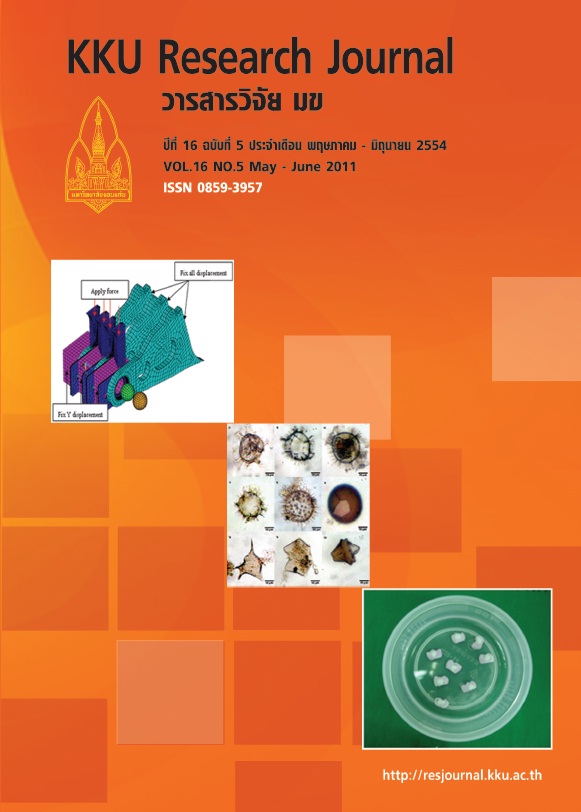Efficiency of removing heavy metals from chemical oxygen demand test wastewater by using alum sludge from a surface water supply treatment plant
Main Article Content
Abstract
Chemical laboratories often use reagents for various determinations containing heavy metals. This is also the case for laboratories controlling the condition of wastewater derived from communities. An indirect way of measuring the content of chemical oxidizing materials in wastewater is the chemical oxygen demand (COD) test. Reagents used for running this test contain heavy metals which contaminate the wastewater of the testing laboratory and should be eliminated before the wastewater of the laboratory is drained out. The aim of this study was to remove heavy metals originated from reagents needed to run the COD test from the laboratory wastewater by using alum sludge filtration. Different pH levels as 3, 4, 5 and 6, and different amounts of alum sludge were tested in order to define an optimal condition for the elimination of heavy metals from the laboratory wastewater. The Kruskal Wallis test was used for statistical analysis. The efficiency of removing silver, chromium and iron depended on the variation of pH. In addition, the increase in amount of alum sludge caused the increase the removal of the heavy metals from the laboratory’s wastewater. The optimum pH value was 4 and the optimum volume of alum sludge was 160 g/l and under these conditions 99.9% of the silver, 99.8% of chromium and 99.9% of iron could be eliminated. The residual concentration of chromium within the wastewater fulfilled the requirement for wastewater quality being less than 0.75 mg/l as stipulated by the Ministry of Industry. However, the suspended solid was still too high and did not fulfill the requirement of the standard quality of the Ministry of Industry.
Article Details
How to Cite
Seehamoke, C., & Sungsitthisawad, W. (2017). Efficiency of removing heavy metals from chemical oxygen demand test wastewater by using alum sludge from a surface water supply treatment plant. Asia-Pacific Journal of Science and Technology, 16(5), 435–443. retrieved from https://so01.tci-thaijo.org/index.php/APST/article/view/83377
Section
Research Articles

